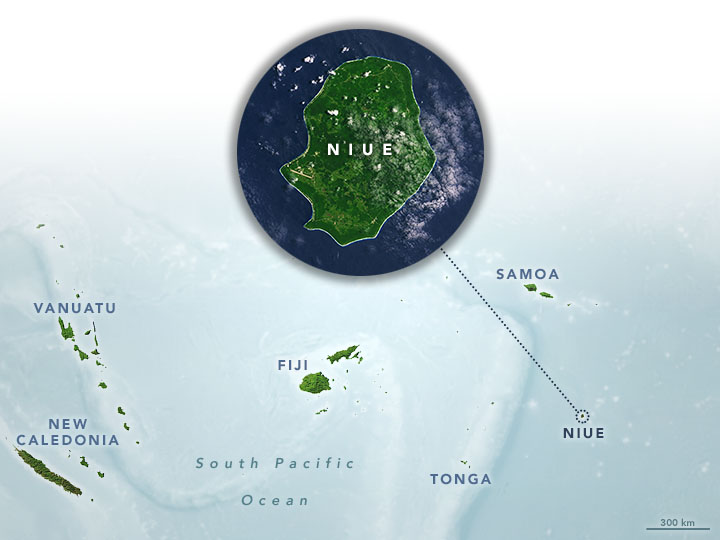

Since the late 1980s, experts in light pollution have designated more than 100 “dark sky” places around the world. Scattered across communities, parks, and nature and biological reserves, the sites offer respites from city, suburban, and industrial lights, allowing celestial phenomena to be fully appreciated and more clearly viewed. Now, for the first time, an entire country has received official dark-sky status.
In early 2020, the International Dark-Sky Association formally recognized the nation of Niue as an international dark sky sanctuary. Sanctuaries differ from dark sky parks in that they are often extremely remote. That is definitely true of Niue. Isolated in the South Pacific Ocean, the island nation’s closest neighbor is the Tongan island group Vava‘u, more than 430 kilometers (270 miles) to the west. Fiji is about 1200 kilometers (800 miles) away.

Niue’s geographic isolation is certainly helpful for limiting light pollution from outside its borders. But artificial lights still illuminate the homes, businesses, and streets for more than 1,600 people living on the island. To become a dark sky nation—and maintain a pristine view of night sky features like the Milky Way—a team of amateur astronomers collaborated with the island’s government and residents to replace conventional lighting with dimmer, more orange-hued LEDs.
Artificial light with higher color temperatures (blue), including many LED lights, can travel farther and increase light pollution. It can also disrupt wildlife; for instance, birds can become disoriented and coral can be prevented from spawning. Conversely, warm-white or filtered LED lights help limit the amount of blue light that is emitted and can minimize artificial skyglow.
Niue is isolated but not completely cut off. Visitors can get to the island on one of the twice-weekly flights from Auckland, New Zealand, about 2,500 kilometers to the southwest. But if you are planning to travel there to see the stunning night sky, be aware that natural phenomena can obscure Niue’s skies at times, too. The tropical skies are cloudiest from November through February and least cloudy from June through August. Skies on November 5, 2019, were clear enough for the Operational Land Imager (OLI) on Landsat 8 to capture the image of Niue at the top of this page.
Even if you can’t get there now, you can still try observing the night sky from home. April 19-26, 2020, is International Dark Sky Week.
NASA Earth Observatory image by Joshua Stevens, using Landsat data from the U.S. Geological Survey. Story by Kathryn Hansen.